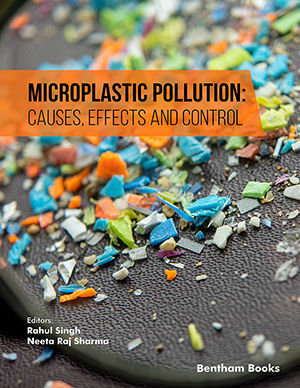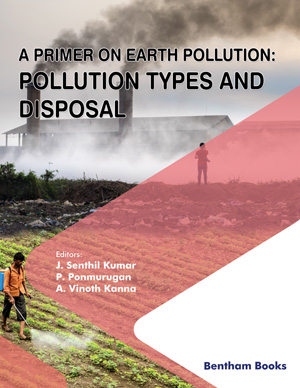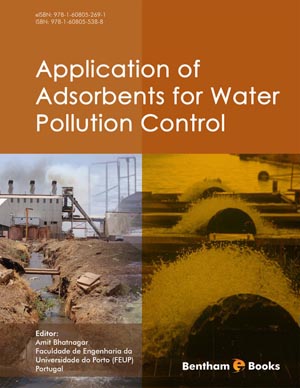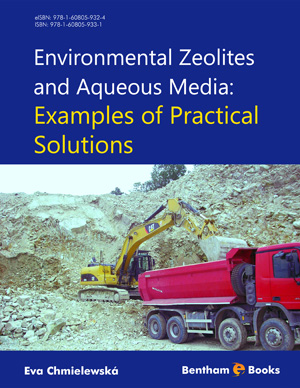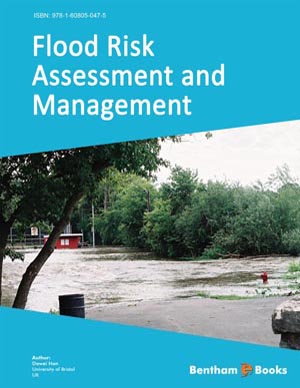Preface
Page: ii-ii (1)
Author: Rahul Singh and Neeta Raj Sharma
DOI: 10.2174/9789815165104123010002
Tools and Techniques to Analyse Microplastic Pollution in Aquatic and Terrestrial Ecosystems
Page: 1-17 (17)
Author: Gautam Priyadarshi, Sagar Prajapati and Mrugesh Trivedi*
DOI: 10.2174/9789815165104123010004
PDF Price: $15
Abstract
The estimation of microplastic pollution in the terrestrial and aquatic
ecosystem is carried out by quantification and identification of the contaminated
environment. Microplastic estimation consists of various steps such as sampling,
visualization and quantification. Generally, the planktonic net, bongo net, manta net,
and neuston net have been used for water sampling. While, grab samplers, tweezers,
tablespoons, trowels, shovels, spatulas, or hand picking methods have been used for soil
and sediment sampling. The biological sample from the study sites comprises the direct
collection of the whole organism or its colony as a sampling unit. However all samples
are required to be processed further to extract the microplastic using techniques such as
filtration, density extraction, digestion, and magnetic & electrostatic extraction. The
digestion method is used for direct characterization such as thermal gravimetric
analysis. The identification of microplastic is based on microscopic images which
provide the shape, size, colour, and texture of the microplastic surface. Visual
identification using microscopes is time-consuming and susceptible to human error as
well as a risk of misidentification, which leads to underestimation or overestimation of
microplastic pollution. Spectroscopic methods such as ATR-FTIR, µ-FTIR and Raman
spectroscopy provide identification and quantification of synthetic polymer. Advance
combined analytical techniques have been reported during the last few years such as
portable micro-Raman, SEM-FTIR, Pyr-GC-MS, TGA-DSC, and PEE. Priority and
care are essential concerning the sampling, storage and handling microplastic
samples for the QA/QC for accurate analysis. The present chapter aims to provide a
comprehensive overview of the current knowledge of tools and techniques used for
microplastic inquiries from an environmental sample.
Occurrence and Source of Microplastic in the Environment
Page: 18-44 (27)
Author: Sarabjeet Kaur* and Monita Dhiman
DOI: 10.2174/9789815165104123010005
PDF Price: $15
Abstract
Microplastics are ubiquitous on the earth, even in the purest environments
like arctic snow, inaccessible mountains, via. Microplastics may be disseminated via
air fallout near metropolitan areas, however, the great bulk of data points to water as
the primary distribution channel. Researchers have discovered that surface and
groundwater are also polluted by microplastics, despite maximum research focusing on
marine pollution. The international community visualizes a decline in the concentration
of floating plastic waste as an essential step toward the long-term sustainability of the seas.
However, there is presently no universally acknowledged indicator of floating plastics
trash density. Ultimately, a significant portion of the present microplastic proliferation
has been attributed to wastewater, which is frequently not efficiently treated to
eliminate such tiny, hydrophobic pollutants. Previously treated wastewater is
discharged into water bodies, which in turn feed natural water reserves. Microplastics
are also dispersed into the soil and terrestrial ecosystems by certain communities that
irrigate their crops with wastewater. A further problem is that micro plastic-rich sludge
from wastewater facilities is used as a fertilizer for food crops. It is crucial to keep an
eye out for new developments in bioplastics and biodegradable polymers that avoid the
build-up of microplastics in the food and agriculture industries.
Impact of Microplastics on Flora and Fauna
Page: 45-68 (24)
Author: Quseen Mushtaq Reshi, Imtiaz Ahmed*, Ishtiyaq Ahmad and Francesco Fazio
DOI: 10.2174/9789815165104123010006
PDF Price: $15
Abstract
Microplastics are the compound class of greatly altered, synthetic
particulates, which pollute wide-ranging types of environments. Being an impending
source of concern owing to wide variability in their size range makes them potentially
dangerous at all trophic levels. Numerous studies have studied the harmful effects of
microplastics on the biota. The present study aims to compile information about the
effect of microplastics on various species belonging to different taxonomic groups as
reported from different parts of the world based on which, a general overview has been
generated which clearly emphasizes that substantial efforts are required to deeply
investigate the abundance, distribution and effects of microplastics on the flora and
fauna of both terrestrial as well as aquatic ecosystems. However, the influence of
microplastic contamination on human health and plants has received less intention. The
knowledge derived from various studies clearly indicates that in order to safeguard our
environment from the deteriorating effects of microplastics, we need to thoroughly
control the amount of plastic production. Moreover, stress should be laid to make more
use of bio-degradable products so as to minimize the demand for these plastic
materials. Also, there is a dire need to aware the masses about the harmful effects of
microplastics and the adoption of such policies at the global level which formulate a
strong action plan for solid waste management so as to alleviate microplastic pollution,
which otherwise could threaten ecological balance as well as harm the health and
survival of various species.
Removal of Microplastic Contaminants from Aquatic Environment
Page: 69-92 (24)
Author: Kuljit Kaur and Harpreet Kaur*
DOI: 10.2174/9789815165104123010007
PDF Price: $15
Abstract
Microplastics (MPs) contamination has recently been recognized as a
serious global concern for global food security and modern society's well-being due to
its widespread presence in the aquatic and terrestrial environment. According to a
growing number of reports, micro- and nanosized plastic components have been
discovered in nearly every part of the world, from the bottom of the ocean to the
mountain top. Microplastics have become prevalent in the environment due to the
gradual disposal of plastic waste, a lack of conventional detection processes with
particular removal techniques, and a slow disposal rate. By adsorbing various heavy
metals, pathogens, and other chemical additives frequently utilised in the production of
raw plastic, microplastics have been shown to work as potential vectors. At the tertiary
level of the food chain, microplastics are consumed by marine organisms such as fish
and crustaceans, and then by humans. This phenomenon is responsible for clogging
digestive systems, disrupting digestion, and ultimately reducing the reproductive
growth of entire living species. As a result of these repercussions, microplastics have
become a growing concern as a new possible risk, demanding the management of
microplastics in aquatic media. This review chapter gives a comprehensive overview of
existing and newly developed technologies for detecting and removing microplastics
from aquatic environments in order to minimise the ultimate possible impact on aquatic
habitats.
Status of Microplastic Pollution in Natural Water Bodies
Page: 93-105 (13)
Author: Sadguru Prakash*
DOI: 10.2174/9789815165104123010008
PDF Price: $15
Abstract
The presence of microplastics in the environment has been declared as an
emerging pollutant because the production of plastic is increasing tremendously
throughout the world without proper management. Microplastics (MPs) are small
plastic particles (size <5mm) released directly from the use of cosmetic products, or
indirectly through the degradation of large plastic items under environmental
conditions. Nowadays, it is estimated that annually between 4 and 14 million tonnes of
plastic go into the seas and are hazardous to aquatic life. Fishes may ingest
microplastics either directly or from the prey containing these particles. MPs were
found between the stomach, gut, and intestine of the fish. These MPs accumulated in
the fish body which causes serious health issues leading to mortality of the fish. MPs
can cause various eco-toxicological effects on fish like behavioral change, cytotoxicity,
neurotoxicity effects, liver stress, etc.
Microplastic Pollution, A Threat to Human Health: A Case Study at Thoothukudi, South India
Page: 106-124 (19)
Author: Sekar Selvam* and Perumal Muthukumar
DOI: 10.2174/9789815165104123010009
PDF Price: $15
Abstract
Microplastic pollution has become a serious problem that affects all marine
and terrestrial environments worldwide. In this study, we investigated microplastics in
the beach sediments and thus we collected 18 sediments from seven locations in
Thoothukudi coastal area. Microplastics were separated and recognized using visual
and micro-Fourier Transform Infrared spectroscopy (µFT-IR) studies. Microplastics’
concentration ranges from high concentrations (up to 53 particles kg-1 d.w) in the dune
areas to visibly lower ranges compared to beach sediments (up to 27 particles kg-1 d.w).
The majority of microplastics identified in collected sediments were polyethylene (PE),
polypropylene (PP), fiber(F), cellulose(CL) and nylon(NY) . The result of this study
can provide valuable background information about microplastic pollution by using
Atomic Force Microscopy (AFM) and the outcome of the results shows the presence of
microplastics that pollute the marine environment in Thoothukudi coastal area and
the human health risk in these areas.
Microplastic as a Multiple Stressor
Page: 125-155 (31)
Author: Savita Bhardwaj, Dhriti Sharma, Tunisha Verma and Dhriti Kapoor*
DOI: 10.2174/9789815165104123010010
PDF Price: $15
Abstract
The presence of microplastics (MPs) throughout the world causes a serious
threat to the functionality and vigor of the ecosystem, which is present in almost all
habitats, such as in aquatic, atmospheric and terrestrial habitats, and is also found in
human consumables. Recently it has been found that MPs have entered the human
body through the food chain from terrestrial agriculture. Migration and retention of
MPs in the soil are controlled by the interaction between MPs and various
environmental factors. There is an immense need in real-world environments to
understand the migration properties and key mechanisms of MPs. Various organisms
such as plants, animals, different microorganisms present in the soil, etc. are impacted
by the presence of toxic MPs in the environment. Therefore, to ensure food safety and
sustainable agriculture, MPs should be treated as a future threat and attention should be
given to understand the mechanisms of transport and ecotoxicological effects of
contaminants released from MPs. The aim of the present chapter is to emphasize the
impact of MPs on various organisms present in the ecosystem and their interaction with
other contaminants.
Bioplastic as an Alternative to Microplastic
Page: 156-172 (17)
Author: Rohan Samir Kumar Sachan, Manpreet Kaur Somal, Ritu Bala, Khushboo, Mukesh Kumar, Inderpal Devgon and Arun Karnwal*
DOI: 10.2174/9789815165104123010011
PDF Price: $15
Abstract
Microplastics pose an imminent risk to the marine environment, biota, and
ecosystem. Their consumption threatens organisms because of the material's ability to
absorb and concentrate environmental contaminants in oceans and then transfer them
through food chains. Microplastic may harm soil biota, such as earthworms, and can
alter soil biophysical parameters, such as soil bulk density, aggregation, and water-holding capacity. To find alternatives to microplastics, scientists have developed
biodegradable plastics that can be discarded in the environment and broken down
quickly by the enzymatic activity of micro-organisms. Bioplastics are made from
biological or renewable components. The bioplastic produced from potato peels, corn,
sugarcane, wheat, rice, banana peels, and other natural materials is eco-friendly and
biodegradable. Bioplastic is also known as Low-carbon plastic. The use of low-carbon
plastic aids in the regulation of global temperature rise. It is used to make toys, home
interiors, shopping bags, bottles, labels, trash bags, and packaging materials. It has
wide applications for bone nails and tissue scaffolds in the medical industry. Its
development also faces other obstacles, including price difficulties, technical
improvements, and waste collection and treatment. Synthesis and characterization
methods will help overcome these obstacles. The present chapter will focus on
bioplastic and its types, the synthesis of bioplastic, the difference between microplastic
and bioplastic, and bioplastic as an alternative approach.
Challenges to the Analysis of Microplastic Pollution from the Environment
Page: 173-196 (24)
Author: Nafiaah Naqash and Rahul Singh*
DOI: 10.2174/9789815165104123010012
PDF Price: $15
Abstract
A growing interest in microplastic pollution in the environment demands
simple, inexpensive, comparable, and robust methods for microplastic (MP) analysis. A
wide range of methodologies for sampling, sample preparation, and MP analysis are in
use. This chapter discusses the most common detection methods, as well as sampling
strategies and sample preparation methods along with a special emphasis on
challenges. The spectroscopic methods require time-consuming sample preparation and
measurement durations, whereas thermo-analytical methods are faster but lack the
ability to determine sample size distribution. Many articles concerning the quality and
quantity of MPs in various matrices have been published. However, drawbacks and
limitations in MP analyses are frequently overlooked or ignored. As a result, depending
on the defined analytical question, the majority of the described methods are
applicable. As a result, this chapter summarizes current sampling, sample preparation,
and analysis methods, discusses limitations, and outlines the complexities associated
with MP loss or contamination during sampling and laboratory testing.
Distribution of Microplastics in Man-made Water Bodies
Page: 197-220 (24)
Author: Suraya Partap Singh* and Reetika Rani
DOI: 10.2174/9789815165104123010013
PDF Price: $15
Abstract
Plastic is one of the most commonly produced and used materials in the
world due to its great features. It has also become the most prevalent type of debris
found in our oceans, lakes, wetlands, and other lentic systems. Plastic (from the Greek
“plastikos”, meaning mouldable) is made of synthetic organic polymers.
Anthropogenic activity has resulted in the deposition of a complex combination of
materials in different water bodies, which may include synthetic polymers (plastics)
which are degraded into smaller fragments which will be in the size of <5 mm; these
are termed microplastics. Microplastic pollution is one of the main matters of concern
nowadays, specifically due to the increasing anthropogenic activities in and around the
different water bodies which lead to ubiquitous distribution of microplastics in water
systems. It is a gleaming topic among the environmentalists of the world. The
environmental release of MPs will occur from a wide variety of sources, including
emissions from wastewater treatment plants, cosmetics, toothpaste, etc. and from the
degradation of larger plastic debris. In recent years, interest in the effects of
microplastics (MPs) has shifted towards freshwater ecosystems and in this chapter, we
provide an overview of the issues of microplastic pollution that are concerned with
manmade water bodies which can be inland as well as coastal environments as well as
the sources of contamination of water bodies with microplastics, their influence and a
conclusion.
Subject Index
Page: 221-226 (6)
Author: Rahul Singh and Neeta Raj Sharma
DOI: 10.2174/9789815165104123010014
Introduction
Microplastic Pollution: Causes, Effects, and Control sheds light on the causes, effects, and control of microplastic pollution, providing valuable insights into the tools and techniques for analysis, the impact on ecosystems, and the potential risks to human well-being. The editors focus on the urgency of addressing this global environmental challenge through collaborative efforts and sustainable solutions. This reference features 10 edited chapters covering multiple aspects of microplastic pollution. The book introduces the reader to various tools and techniques used to analyze microplastic pollution in both aquatic and terrestrial ecosystems. It then examines the sources, pathways, and levels of microplastic contamination in the environment and explains how to evaluate the potential health risks for the nearby communities. The impact of microplastic on flora and fauna is presented in one chapter. To emphasize the importance of assessing microplastic contamination, the editors present a case study conducted in Thoothukudi, South India, to explore the implications of microplastic pollution on human health. The book also provides information on solutions to microplastic pollution including the use of bioplastics and removal techniques. Microplastic Pollution: Causes, Effects, and Control equips readers with a complete understanding of the global challenge of microplastics, fostering awareness and encouraging further research and action to protect our ecosystems and human health from their detrimental impact. It is an ideal handbook for environmental science researchers and students who need to understand microplastic pollution and plan environmental impact assessments for academic research and professional projects. Key Features - Comprehensive coverage of microplastic pollution with 10 structured chapters - Informs readers about important parameters to understand and measure the impact of microplastics on local fauna, flora and the surrounding environment - Covers evaluation and remediation of microplastics in both terrestrial and marine environments - Includes references for advanced readers - Includes a case study on the effect of microplastics in Thoothukudi, South India


